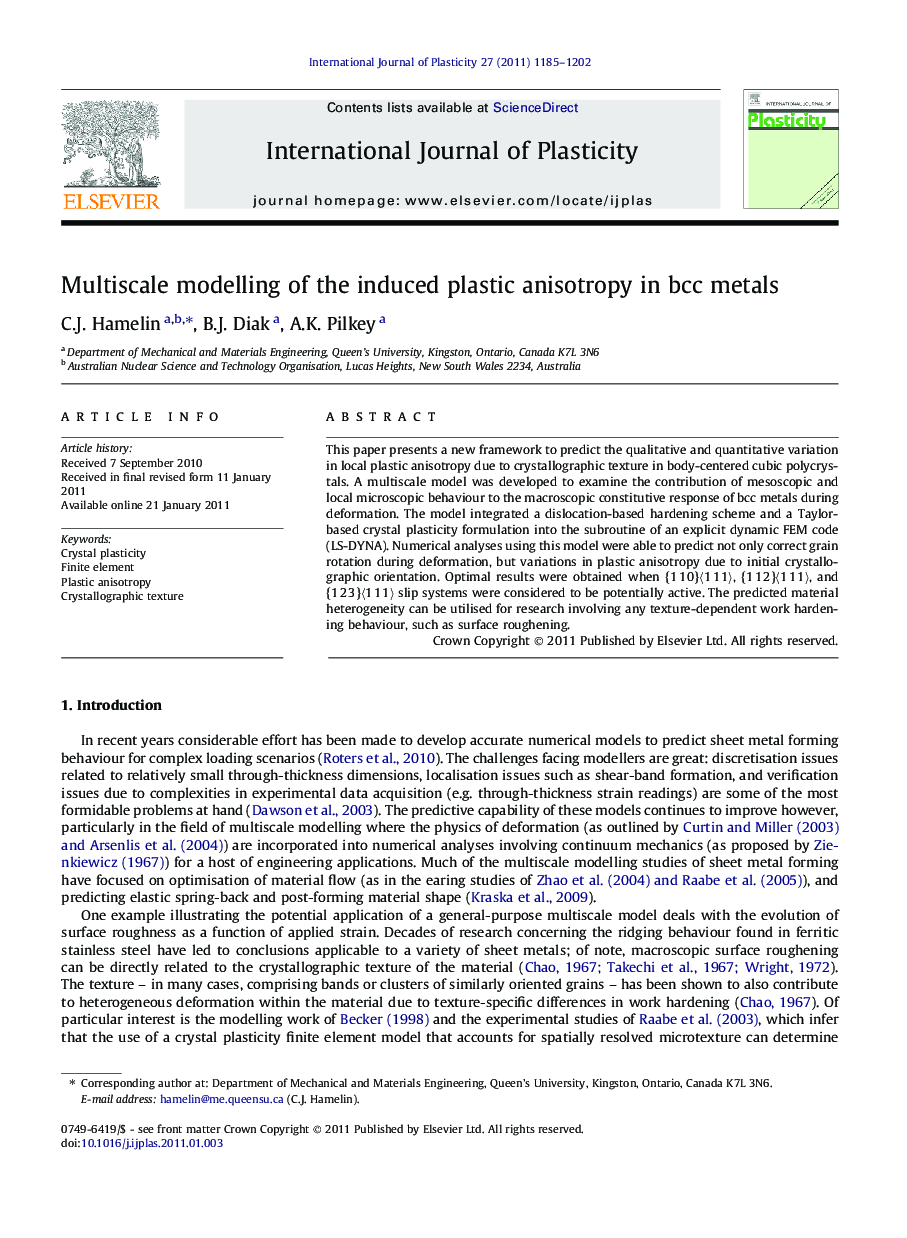| Article ID | Journal | Published Year | Pages | File Type |
|---|---|---|---|---|
| 786522 | International Journal of Plasticity | 2011 | 18 Pages |
This paper presents a new framework to predict the qualitative and quantitative variation in local plastic anisotropy due to crystallographic texture in body-centered cubic polycrystals. A multiscale model was developed to examine the contribution of mesoscopic and local microscopic behaviour to the macroscopic constitutive response of bcc metals during deformation. The model integrated a dislocation-based hardening scheme and a Taylor-based crystal plasticity formulation into the subroutine of an explicit dynamic FEM code (LS-DYNA). Numerical analyses using this model were able to predict not only correct grain rotation during deformation, but variations in plastic anisotropy due to initial crystallographic orientation. Optimal results were obtained when {1 1 0}〈1 1 1〉, {1 1 2}〈1 1 1〉, and {1 2 3}〈1 1 1〉 slip systems were considered to be potentially active. The predicted material heterogeneity can be utilised for research involving any texture-dependent work hardening behaviour, such as surface roughening.
Research highlights► We develop a multiscale model to predict local plastic anisotropy in bcc metals. ► We use mesoscopic work hardening, crystal plasticity, and finite element methods. ► Polycrystal texture evolution and orientation-dependent anisotropy are captured. ► Optimal results were obtained when all 48 bcc primary slip systems were considered. ► The model can predict transient hardening effects due to strain path change.
